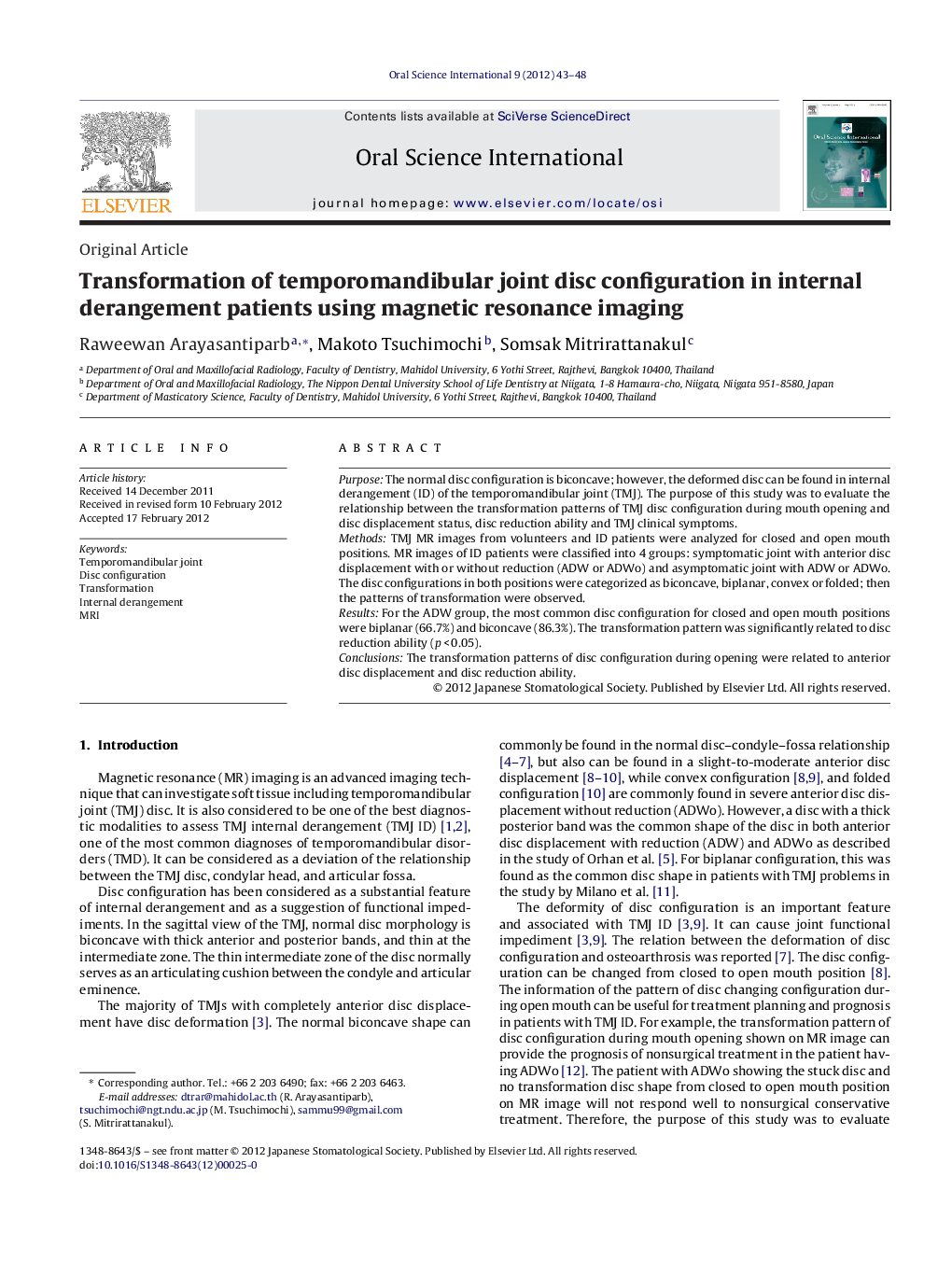| Article ID | Journal | Published Year | Pages | File Type |
|---|---|---|---|---|
| 2777255 | Oral Science International | 2012 | 6 Pages |
PurposeThe normal disc configuration is biconcave; however, the deformed disc can be found in internal derangement (ID) of the temporomandibular joint (TMJ). The purpose of this study was to evaluate the relationship between the transformation patterns of TMJ disc configuration during mouth opening and disc displacement status, disc reduction ability and TMJ clinical symptoms.MethodsTMJ MR images from volunteers and ID patients were analyzed for closed and open mouth positions. MR images of ID patients were classified into 4 groups: symptomatic joint with anterior disc displacement with or without reduction (ADW or ADWo) and asymptomatic joint with ADW or ADWo. The disc configurations in both positions were categorized as biconcave, biplanar, convex or folded; then the patterns of transformation were observed.ResultsFor the ADW group, the most common disc configuration for closed and open mouth positions were biplanar (66.7%) and biconcave (86.3%). The transformation pattern was significantly related to disc reduction ability (p < 0.05).ConclusionsThe transformation patterns of disc configuration during opening were related to anterior disc displacement and disc reduction ability.
▸ There were 4 disc configurations: biconcave, biplanar, convex and folded. ▸ Disc transformation patterns were related to disc reduction ability. ▸ Disc transformation patterns were not related to the clinical symptoms of TMJ.
